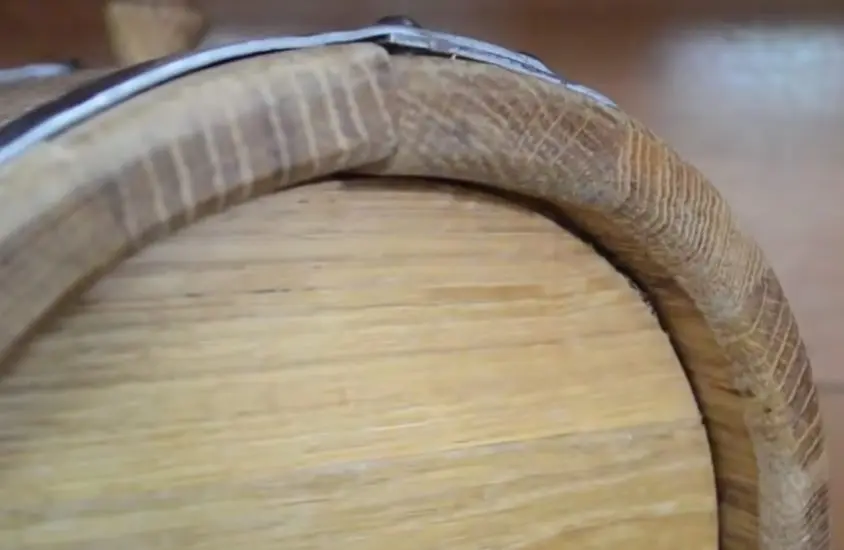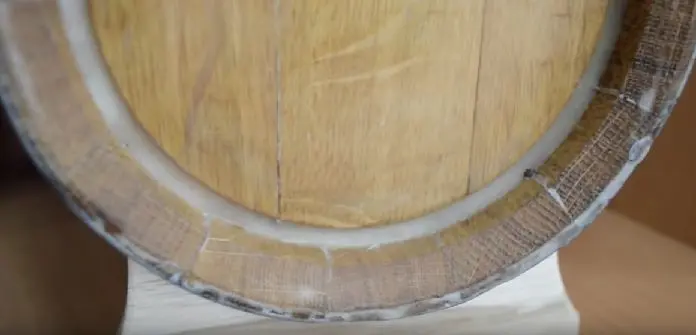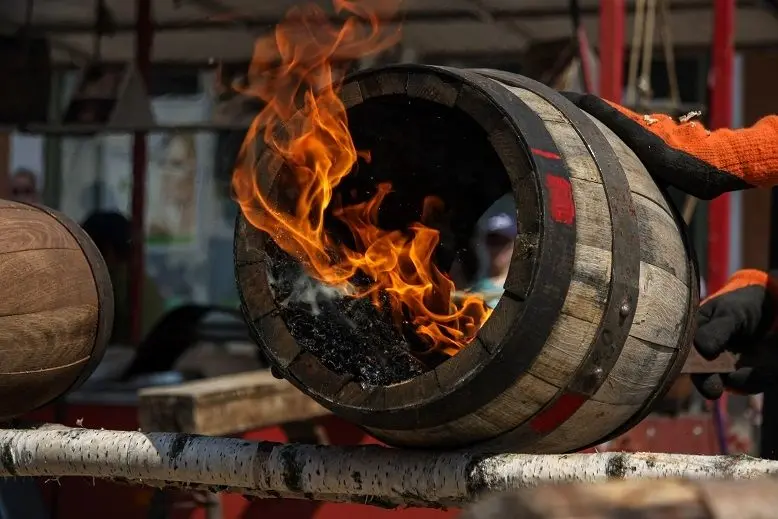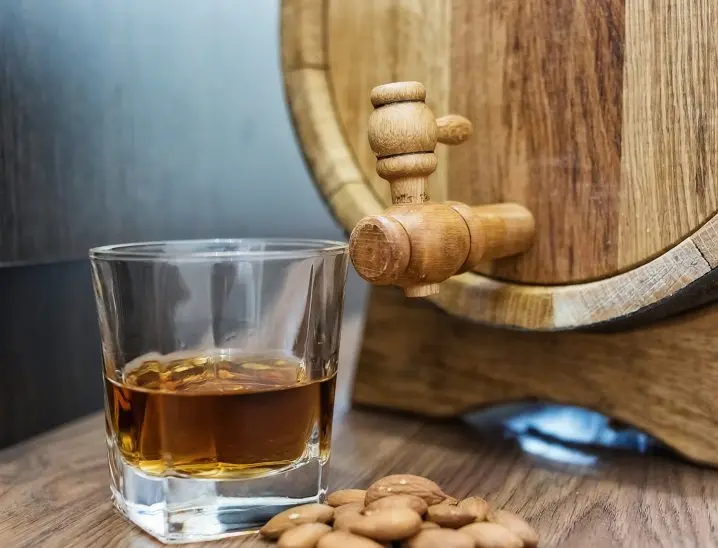Contents
When choosing an oak barrel, most novice distillers pay attention only to volume (displacement), wood and degree of roasting. However, there are other important parameters that affect quality. A bad barrel is not only a waste of money, but often also an irretrievably spoiled drink. We will look at what questions you need to ask the manufacturer or seller before buying a barrel.
1. Volume
The volume depends on the amount of alcohol available. It is advisable to fill the barrel completely, leaving no free space in it. This applies to both whiskey and cognac, as well as wine and beer.
The second important point is how quickly the result is needed. For example, aging in a 5-liter barrel of strong distillate takes 4-5 times less time than in a 50-liter oak barrel.
It should be noted that bulky barrels require large areas and special storage conditions in the cellar. For an apartment, it is advisable to buy barrels with a volume of 3 to 20 liters.
2. Material (type of wood)
Wood significantly affects the taste of the drink. The most common are oak barrels, but they are made of cherry, acacia and other types of wood.
Oak is a classic for aging any spirits; all professional distillers and winemakers use such barrels. There are 4 varieties of oak, which, due to their chemical and biological composition of wood, are suitable for the manufacture of barrels for aging alcohol: American white (grows on the border of Canada and the USA), Slavonian (grows in Hungary, Slovenia and Slovakia), Limousin (from France) and Caucasian hardwood oak from the Black Sea coast (locality in the region of Tuapse, Gelendzhik and Sochi).
Other varieties of oak are cheaper, for example, Ukrainian or Central European, but they do not ennoble the drink, but significantly change its taste, and not for the better.
American, Slavonian and Limousin oaks are very expensive in Russia due to the cost of transportation. The majority of Russian cooperage productions work with the Caucasian sort of oak.
3. Wood harvesting method
There are two options: sawn board and radial riveting (chipped oak). The first option is more suitable for the production of furniture, although it is used for the manufacture of barrels. The second is used in cooperage workshops at distilleries.
The method of cutting affects the tightness of the barrel and proper gas exchange – a good oak barrel “breathes” and does not leak, and the combination of these two factors is possible only with radial riveting.
In a sawn board, the annual rings of wood run along the staves, the juice channels run across.

In a barrel made of split oak, the annual rings are located across the staves, and the juice channels are along the end of the stave.

4. The thickness of the barrel riveting
The share of angels (percentage of evaporation of alcohol) depends on this factor. The thinner the stave, the greater the likelihood of barrel leakage and the percentage of evaporation. The result is less drink.
The thickness of the riveting should be correctly measured near the filler hole of the barrel after the product is ready for operation (firing, grinding, etc.).
For different volumes of barrels, the optimal values differ:
- 3-5 liters – 16 mm;
- 10-30 liters – 18-19 mm;
- 30-50 liters and more – 25-27 mm.
5. Barrel firing
Professional distillers practice 8-10 firing methods. For domestic purposes, 3 types of firing are sufficient: weak (technical), medium and strong.
Weak firing of barrels minimally affects the taste and color of the drink, therefore it is used for kvass, beer and white wine. Medium firing is suitable for most red wines, cognacs, whiskeys and fruit distillates. Strong roasting is considered universal, it is required for bourbon (American corn whiskey), suitable for calvados, any brandy, some whiskeys and cognacs.

If you pour the same distillate into a barrel with medium and strong roasting for the same time, then you can end up with two different drinks. At the same time, both can be of high quality, but unique in terms of organoleptic properties. There is good ground for experimentation here.
6. Hoop material
There are three options for barrel hoops: made of galvanized steel, stainless steel and ordinary ferrous metal, painted with black paint.
The Russian GOST for the production of barrels allows steel grades that refer to galvanized and ferrous metal.
Stainless steel is not suitable, because it does not allow you to securely fit the barrel. When, due to natural processes, the wood of the barrel is slightly stretched or narrowed, galvanized or ferrous metal “plays” after the wood, and stainless steel does not return to its original position, the stainless steel hoop flies off and leaks appear.
Ferrous metal was used in Soviet times for large barrels from 1000 to 20000 liters. The disadvantage is that the oak absorbs the paint that is used to cover ferrous metal and transfers the smell to the drink.
The optimal solution is a galvanized hoop, which is used in barrels of all European manufacturers.
7. Barrel coating
In the classic version and according to GOST, barrels are not covered. Sufficiently clean, perfectly polished surface.

On the market there are barrels covered with beeswax (waxed). Most distillers agree that it is better not to cover the outer surface with wax, as this disrupts gas exchange and the drink ripens incorrectly. Distilleries may only wax the ends and chimes of barrels to reduce evaporation.
Lacquered and painted barrels are categorically not suitable for the preparation of alcoholic beverages.
8. Availability of a tap
It is advisable to buy barrels with a small capacity tap – up to 20-25 liters (optimally 3-10 liters). The tap is a weak point, its presence is especially undesirable when closing the barrel for a long time.
For example, if the drink is left in a barrel for 2-3 years, then during this time the tap will be needed only once to drain the finished alcohol into bottles. However, for barrels of 3-5 liters, the presence of a tap is advisable, since the alcohol is drained every few months, and the pressure inside is not enough to push through a well-made tap.

Barrel taps are made of stainless steel, brass and wood. Brass and stainless steel are considered the most reliable. But any metal oxidizes alcohol, affecting the taste, and brass also changes color – adds a bluish-black tint. Therefore, it is better to use wooden cranes.









